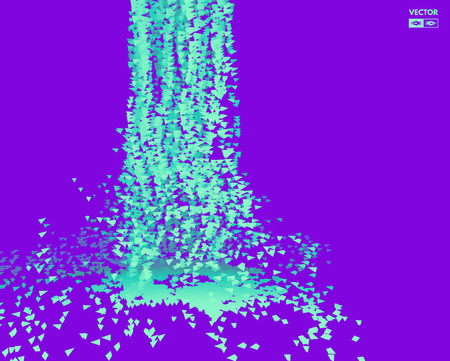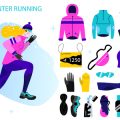1. Understanding Gravity Water Filters
If you’ve spent time backpacking or hiking in the U.S., you’ve probably noticed gravity water filters hanging from trees at campsites or seen them clipped to a pack. But what exactly are these filters, and how do they work? Let’s break down the basics of gravity water filters so you can decide if they’re right for your next long trail adventure.
How Gravity Water Filters Work
Gravity water filters use—you guessed it—gravity to move water from a “dirty” bag through a filter into a “clean” bag or bottle. Instead of pumping or squeezing, you simply fill the dirty reservoir with untreated water, hang it above the clean container, and let gravity do the rest. This hands-off approach is a big reason why many American hikers love using them on multi-day trips.
Key Components of a Gravity Water Filter System
| Component | Description |
|---|---|
| Dirty Water Reservoir | A durable bag or pouch for collecting untreated source water (from streams, lakes, etc.) |
| Filter Cartridge | The heart of the system; typically uses hollow fiber membranes to trap bacteria and protozoa |
| Tubing | Connects the reservoirs and allows water to flow through the filter via gravity |
| Clean Water Reservoir/Bottle | A second bag or compatible bottle for collecting filtered, drinkable water |
| Clips/Hooks/Straps | Accessories to hang or secure your filter setup while gravity does its job |
The Science Behind Filtration
The core technology in most gravity filters is the hollow fiber membrane. Imagine thousands of tiny straws bundled together—water molecules can pass through the microscopic pores in these fibers, but larger contaminants like bacteria, protozoa, and dirt get trapped on the outside. Most filters used on U.S. trails are rated to remove 99.9999% of bacteria (like E. coli) and 99.9% of protozoa (like Giardia and Cryptosporidium). Some advanced systems add activated carbon elements to reduce taste and odors.
Main Benefits at a Glance:
- No pumping required—just fill, hang, and wait
- Good for filtering large volumes at once (great for groups)
- Generally lightweight and compact when packed down
- Effective against common North American waterborne pathogens
Quick Comparison: Gravity vs Other Filter Types
| Filter Type | Effort Required | Best Use Case |
|---|---|---|
| Gravity Filter | Minimal (hands-free) | Group camping, basecamps, long-distance hiking with breaks |
| Pump Filter | Moderate (manual pumping) | Solo hikers needing quick water on the go |
| Squeeze Filter/Bottle | Low-Moderate (squeezing bottle/pouch) | Ultralight solo hikers, day trips |
| Chemical Treatment | Minimal (wait time for chemicals) | Emergency use, backup option, solo travel where weight is critical |
This overview gives you a solid understanding of how gravity water filters fit into the toolkit of American hikers and backpackers. Next up, we’ll dive deeper into their real-world pros and cons out on the trail.
2. The Pros: Why Hikers Love Them
If you’ve ever spent hours pumping water from a stream on a long hike, you’ll understand why gravity water filters are getting so much love from American hikers. These systems have gained popularity for several good reasons, especially among backpackers tackling trails like the Pacific Crest Trail or the Appalachian Trail. Let’s break down what makes gravity water filters such an attractive option for long-distance adventures.
Effortless Filtration: Let Gravity Do the Work
The biggest perk? There’s barely any effort involved. Unlike traditional pump filters where you work up a sweat just to get a liter of clean water, gravity filters rely on—you guessed it—gravity. Simply fill the dirty water reservoir, hang it up (a tree branch works perfectly), and let the water flow through the filter into your clean container below. No pumping, no squeezing, no fuss.
High Capacity: Perfect for Groups or Big Water Needs
Gravity filters typically come with large reservoirs, often holding 2 to 6 liters of water at a time. This means you can process enough water in one go for cooking, drinking, and refilling everyone’s bottles. If you’re hiking with friends or need to set up camp far from a reliable water source, this feature is a real lifesaver.
| Feature | Gravity Water Filter | Pump Filter |
|---|---|---|
| Water Processed at Once | 2-6+ liters | 1-2 liters per session |
| Effort Required | Minimal (just hang and wait) | High (manual pumping) |
| Great for Groups? | Yes | No (slower for multiple people) |
No More Sore Arms: Minimal Pumping Needed
This might be the most underrated benefit—your arms will thank you after a long day on the trail! With no manual pumping required, you can use that saved energy for hiking or setting up camp instead of working your biceps at every water stop.
Easy to Use Even When Tired
After a grueling day, even simple tasks can feel overwhelming. Gravity filters are straightforward: fill them up and let gravity handle the rest while you kick back or make dinner. It’s as close as you’ll get to “set-it-and-forget-it” filtration out in the wild.
Summary Table: Why Hikers Prefer Gravity Filters on Long Trails
| Advantage | Description |
|---|---|
| Simplicity | No complex setup or moving parts; just fill and hang. |
| Capacity | Handles large amounts of water in one go—ideal for groups. |
| Energy Saving | No need for manual effort; perfect after long miles on foot. |
| Hands-Free Operation | You can multitask while your water is being filtered. |
All in all, these advantages help explain why so many hikers are making gravity water filters their go-to choice for extended trips across America’s scenic long trails.

3. Potential Drawbacks and Limitations
While gravity water filters have some solid advantages for long-distance hikers, it’s important to recognize that they also come with a handful of challenges and drawbacks. Here’s a closer look at the most common issues you might face out on the trail.
Bigger and Bulkier Than Other Options
One of the first things backpackers notice about gravity filters is their size. Compared to lightweight squeeze filters or even chemical drops, these systems can take up more space in your pack. The filter units, hoses, and larger water reservoirs add to both bulk and weight — something every ounce-conscious hiker needs to consider.
| Water Treatment Method | Average Weight (oz) | Packing Size |
|---|---|---|
| Gravity Filter | 10-16 | Bulky (multiple parts) |
| Squeeze Filter | 2-4 | Compact (single unit) |
| Chemical Drops/Tablets | <1 | Tiny (fits anywhere) |
Slower Flow Rates in the Backcountry
Gravity filters work by letting water slowly drip through the filter, and while you don’t have to pump or squeeze, this process can be a lot slower than you might expect. If you’re hiking with a group or need to treat several liters at once, filling everyone’s bottles could take longer than anticipated — especially if you’re impatient or pressed for time.
Factors That Affect Flow Rate:
- Dirtier water: More debris means slower filtering.
- Clogged filter: Filters need backflushing to maintain speed.
- Cold weather: Low temps slow down flow even more.
Packing and Setup Considerations
Packing a gravity filter isn’t as straightforward as tossing in a squeeze bottle. You’ll need to keep track of multiple pieces: clean and dirty water bags, hoses, and the filter itself. At camp, finding a place to hang the reservoir high enough for gravity to do its job can sometimes be tricky, especially in areas without sturdy tree branches or when camping above treeline.
Packing Tips:
- Keep all components together in a mesh bag.
- Practice setting up before your trip so you know what works best.
- If you’re cowboy camping, bring cordage for creative hanging solutions.
Understanding these limitations will help you decide if a gravity water filter fits your style of backpacking or if another option would suit you better on America’s long trails.
4. Alternatives on the Trail
When you’re planning a long trek in the U.S., choosing the right water treatment method is key. Gravity water filters are popular, but they’re just one option among several. Let’s break down how gravity filters stack up against other common choices: squeeze filters, UV purifiers, and chemical drops.
Comparing Popular Water Treatment Methods
| Method | How It Works | Pros | Cons |
|---|---|---|---|
| Gravity Water Filters | Fill a bag with dirty water, hang it up, and let gravity pull water through the filter into a clean container. | No squeezing or pumping, good for groups, treats lots of water at once. | Bulkier than some options, can clog if water is very silty, setup takes a bit of space. |
| Squeeze Filters | Attach to a soft bottle or pouch, squeeze water through the filter into your bottle or mouth. | Lightweight, quick for solo hikers, easy to use on the go. | Squeezing can get tiring, filter can clog, not ideal for large groups. |
| UV Purifiers | Use UV light (like a SteriPEN) to kill bacteria and viruses in clear water bottles. | Very fast (usually under 90 seconds), kills viruses too, compact and lightweight. | Batteries needed, doesn’t remove dirt/sediment, only works in clear water. |
| Chemical Drops/Tablets | Add chemicals (like iodine or chlorine dioxide) to kill germs over time. | Tiny and ultralight, easy backup, kills most bugs including viruses. | Takes 30 mins–4 hrs to work, can taste funny, not effective against all parasites like Cryptosporidium unless using specific chemicals. |
What Do Most Hikers Use?
A lot depends on where you hike and your personal style. Many Appalachian Trail thru-hikers love squeeze filters because they’re small and fast for solo use. Gravity systems are great when you’re camping with friends or want to fill several bottles at once without much effort. In really remote areas where viruses are a concern (think Southern Utah or parts of the Pacific Northwest), some hikers add UV or chemical treatments as a backup. It’s pretty common to see folks carrying more than one method just in case something breaks or clogs up on trail.
5. Are They Worth It? Real-World Trail Perspectives
What U.S. Long-Distance Hikers Say
When it comes to gravity water filters, American long-distance hikers have a lot to say based on real trail experience. Some love the convenience and large capacity, while others find them bulky or slow for solo adventures. Here’s what hikers on popular U.S. trails like the Appalachian Trail (AT), Pacific Crest Trail (PCT), and Continental Divide Trail (CDT) are reporting:
| Trail Name | Hiker Feedback | Recommended For |
|---|---|---|
| Appalachian Trail (AT) | “Great for groups; less bending down at streams. Can filter several liters while setting up camp.” | Groups, families, camp setups with nearby water sources |
| Pacific Crest Trail (PCT) | “Sometimes slow with silty water, but awesome at high camps. Not ideal if you need fast water on the go.” | Base camps, dry stretches between water carries |
| Continental Divide Trail (CDT) | “Reliable in cattle country where water is questionable. Filters lots at once, but can be heavy when full.” | Areas with uncertain water quality, multiple hikers sharing gear |
Pros and Cons from the Trail Community
Common Pros:
- No pumping required—just hang and wait.
- Good for filtering big batches of water at once.
- Useful for group cooking and filling multiple bottles.
Common Cons:
- Takes up more space than a squeeze filter or chemical tabs.
- Can clog up with silty or muddy water unless pre-filtered.
- Not as convenient if you’re constantly on the move or solo hiking.
When Gravity Filters Make Sense
If you’re hiking with a group or planning to set up a basecamp near a water source, gravity filters are often worth carrying. They let you multitask—set it up and cook dinner while your water filters itself. However, if you’re hiking solo, trying to save every ounce, or expect to get most of your water from small trickles or puddles, a lightweight squeeze filter might be more practical.
Quick Decision Table: Is a Gravity Filter Right for You?
| Your Situation | Gravity Filter? |
|---|---|
| Group hiking/camping together | Yes—share one system for everyone! |
| Solo ultralight backpacking | No—consider lighter alternatives. |
| Campsites near reliable streams/lakes | Yes—easy to use while setting up camp. |
| Mostly dry stretches/quick stops for water | No—might be too bulky and slow. |
The feedback from U.S.-based hikers shows gravity filters shine in specific scenarios—especially when convenience and batch filtering are needed. Think about your trail plans and hiking style before tossing one into your pack!


